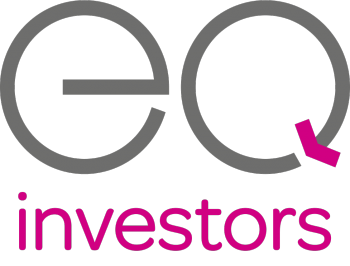The prospect of interest rate cuts is the dominant asset allocation decision for 2024 and investors will have to decide how far central banks will go, or whether they will cut at all.
In this environment fixed income is likely to thrive, although investors must select where they are positioned along the yield curve.
Other key choices will have to be made on whether the ‘magnificent seven’ will continue to drive US equity returns, and whether there are increasing opportunities in emerging markets.
With this in mind, we asked five members of ETF Stream’s ETF Buyers Club for their market outlook and top ETF picks for 2024.

Nathan Sweeney, CIO of multi-asset at Marlborough
We expect to see inflation continue to fall in 2024, persuading central banks to start to cut interest rates, and we believe the likelihood is there will only be a modest slowdown in global economic growth.
As multi-asset investors, we see this scenario as being positive for both fixed income and equities. If banks are paying lower interest rates this makes government bonds in particular look more attractive and if the cost of borrowing falls then we would expect equities to stage a more broad-based recovery.
The US technology giants have had a strong run in 2023 and we believe they will continue to perform reasonably well in 2024, as they continue to deliver robust earnings. However, we believe the most attractive opportunities will come from other sectors, as a wider range of companies benefit from the improving interest rate outlook. So, we have reduced our exposure to tech mega-caps and allocated to large and mid-caps.
In bonds, we favour longer-dated government bonds, which we expect to benefit more when bank interest rates begin to fall and investors look elsewhere for an attractive income.
ETF pick
iShares S&P 500 Equal Weight UCITS ETF (EWSP)

Tertius Bonnin, assistant portfolio manager at EQ Investors
Technology is often a difficult sector when approaching from a sustainability perspective. Many of the ‘magnificent seven’ stocks that have dominated equity returns in 2023 fail for inclusion on ESG grounds due to either weak governance structures or poor track records in managing social risks. Additionally, when considering how many of these companies generate their revenues, generating money from advertising does not inherently solve global challenges.
We like the digital security theme to get exposure to the technology sector without compromising on the ESG or sustainability objectives of our portfolios. Digital security is essential in a world that is becoming increasingly data focused.
It is also a beneficiary of the boom in AI as many organisations with large data sets set to benefit from the trend will potentially be at risk of cyber-attacks and data breaches. This creates a significant financial risk as it can result in organisations facing large fines from regulators and can be devastating for customer trust in a brand.
While cybersecurity might easily be overlooked, particularly with the hype around AI, we like the business models of many of these software-orientated companies which typically have a high degree of recurring revenues, high margins and sustainable rates of growth.
ETF pick
iShares Digital Security UCITS ETF (LOCK)

Lynn Hutchinson, head of ETF and index solutions at Charles Stanley
Deglobalisation is gaining momentum. Heightened geopolitical tensions over the past few years have continued to challenge the concept of globalisation, as countries are increasingly looking to reorientate their supply chains onshore. This is likely to benefit some product inflows.
Developed economies want to strengthen their supply chains. In August, the White House issued final guidance on Build America, Buy America (BABA) regulations as part of the Infrastructure Investment and Jobs Act (IIJA) that is meant to boost the amount of domestically-sourced materials used for federally funded infrastructure projects.
To qualify as “American made” under BABA, a product must be manufactured in the US, with at least 55% of the cost of components fabricated domestically. The guidelines could represent a small additional tailwind for the domestically-focused material suppliers.
An ETF that we see as likely to benefit from this onshoring is the Global X US Infrastructure UCITS ETF. For a company to be included in this ETF, it must generate a significant proportion of revenues from the infrastructure sub-themes and over 50% of revenues from the US – approximately 74% of the companies are considered pure-play infrastructure companies with revenue exposure to the US around 78% of the ETF.
ETF pick
Global X U.S. Infrastructure Development UCITS ETF (PAVE)

Andrew Limberis, investment director at Omba Advisory & Investments
We are expecting 2024 to bring about the next phase of activity for markets, following the COVID-19 rebound in 2020-21 and the market side-step in 2022-23. Falling inflation – with some overshooting to the downside – coupled with easing monetary policy (rate cuts) will only be part of the story in 2024.
Fiscal conditions look set to be less supportive than in recent years with the upcoming UK and US elections not providing much encouragement. A delayed normalisation in China will take time but with equity markets forward-looking, opportunities may present themselves.
Equity and fixed income markets will remain fickle to changing economic conditions given the lack of symmetry of outcomes, from deep recession to soft landing to surprising strength. Timing markets will remain fraught as evidenced by this not yet recession being one of the most well-predicted and awaited.
For this reason, broad and diversified positioning will be key to achieving investment outcomes. Some duration, low credit risk and some currency diversification are how we position our fixed income portfolios.
Our equity allocation is well-diversified with changing sector allocations to position for broadening company performance outside of the ‘magnificent seven’. Overall, we are staying invested with a slight defensive tilt.

Stephan Kemper, chief investment strategist, team advisory desk, at BNP Paribas Wealth Management
We are expecting an ongoing deceleration of inflation in 2024 which will allow the Federal Reserve and the European Central Bank to start cutting policy rates soon, most likely during Q2 2024.
This will further reduce the risk of a hard landing and should allow for a moderate growth recovery in H2 2024. In the near term, GDP growth is still likely to decelerate meaningful in the US while staying muted in the eurozone.
Disinflation and the prospect of rate cuts are positive for risky assets in general. For US large-cap (tech) stocks, valuations are not on the side of the bulls though. We stay neutral on US equities while preferring equal-weighted over market cap.
We keep our positive stance on the eurozone, UK, Japan and emerging markets. Within EM, we especially prefer potential nearshoring winners such as Mexico. As the world is turning increasingly multipolar, access and security of resources will become increasingly important.
In conjunction with the need to fight climate change, we see value in companies contributing to a circular economy, a topic covered for example by the ECPI Circular Economy Leaders index, on which ETFs are available.
We stay positive on investment grade corporate bonds given the risk/return upside and low volatility of return while staying neutral on high yield where we feel spreads are too low relative to the economic cycle and potential increases in defaults.






